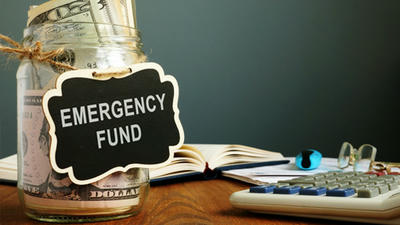
In the ever-changing landscape of personal finance, one principle remains constant: the importance of being prepared for unexpected expenses. Life is unpredictable, and emergencies can arise at any moment, from medical bills to job loss. This is where an emergency fund comes into play.
Understanding Emergency Funds
What is an Emergency Fund?
An emergency fund is a savings account specifically set aside to cover unexpected expenses or financial emergencies. These funds are not intended for everyday expenditures or planned purchases; rather, they serve as a financial cushion during challenging times.
Common Uses of an Emergency Fund
An emergency fund can come in handy for a variety of unforeseen situations, including:
- Medical Emergencies: Unexpected medical bills or urgent care visits can strain your finances.
- Job Loss: Losing a job can create significant financial uncertainty. An emergency fund helps cover essential expenses while you search for a new job.
- Car Repairs: Sudden vehicle repairs, such as engine failures or accidents, can lead to unexpected costs.
- Home Repairs: Issues such as a leaky roof, plumbing problems, or broken appliances may require immediate attention and financial resources.
- Unexpected Travel: Sometimes emergencies require travel, whether to visit a sick family member or deal with urgent matters.
Why You Need an Emergency Fund
1. Financial Security
An emergency fund provides a safety net that promotes financial stability and peace of mind. Knowing you have funds available in times of need allows you to navigate crises without resorting to high-interest credit cards or loans.
2. Protection Against Debt
Having an emergency fund can help you avoid accumulating debt during unexpected financial challenges. Without savings, you may feel compelled to rely on credit cards or personal loans, leading to long-term financial obligations and interest payments.
3. Stress Reduction
Financial stress can take a toll on your mental health and overall well-being. An emergency fund can alleviate anxiety by providing a buffer against life's uncertainties, allowing you to face challenges with confidence.
4. Flexibility and Independence
With an emergency fund in place, you gain greater flexibility in your financial decisions. You may choose to pursue career opportunities, start a business, or make lifestyle changes without fear of economic strain, knowing you have a financial safety net.
5. Preparing for Life's Ups and Downs
Life is full of unexpected twists, and having an emergency fund prepares you for the ups and downs. Whether it's a sudden medical situation or a temporary loss of income, being financially prepared enables you to respond effectively.

How to Build Your Emergency Fund
Building an emergency fund may seem daunting, but with a structured approach, it can be accomplished over time. Here are the steps to create a robust emergency fund:
1. Set a Target Amount
Determine how much you want to save for your emergency fund. A common guideline is to aim for three to six months’ worth of living expenses. However, the ideal amount may vary based on individual circumstances, such as job stability and personal preferences.
Example Calculation
To calculate your target amount, consider your monthly expenses, which may include:
- Housing (rent/mortgage)
- Utilities
- Groceries
- Transportation
- Insurance
- Debt payments
- Miscellaneous expenses
For instance, if your monthly living expenses total 9,000 and $ 18,000, depending on whether you choose three or six months of coverage.
2. Choose the Right Savings Account
Selecting the right savings account is crucial for your emergency fund. Here are some options to consider:
- High-Yield Savings Account: These accounts typically offer better interest rates than traditional savings accounts, allowing your money to grow while remaining easily accessible.
- Money Market Account: This account type often provides competitive interest rates and allows limited check-writing abilities. However, they may require higher minimum balances.
- Certificates of Deposit (CDs): While these accounts typically offer higher interest rates, they require you to lock in your funds for a specific term, which may not be ideal for emergency purposes due to limited access.
3. Make a Plan to Save
Once you have a target amount and a suitable savings account, create a savings plan to reach your goal. Consider the following strategies:
A. Automatic Transfers
Set up automatic transfers from your checking account into your emergency fund. Automating your savings ensures that you consistently contribute without needing to think about it. Start with a manageable amount and adjust as your financial situation allows.
B. Cut Unnecessary Expenses
Review your budget to identify areas where you can cut expenses. Redirect those savings toward your emergency fund. This may involve reducing discretionary spending on dining out, entertainment, or subscription services.
C. Use Windfalls Wisely
Consider allocating any unexpected financial windfalls, such as tax refunds, bonuses, or gifts, toward your emergency fund. Taking advantage of these one-time funds can accelerate your savings progress.
4. Monitor Your Progress
Regularly review your emergency fund to track your progress. Celebrate milestones along the way, such as reaching specific savings goals. Monitoring your savings keeps you motivated and allows you to adjust your plan as needed.
Maintaining Your Emergency Fund
Building an emergency fund is just the beginning; maintaining it is equally important. Here are some tips to ensure your emergency fund remains intact:
1. Avoid Using the Fund for Non-Emergencies
One of the significant challenges of emergency funds is resisting the temptation to dip into them for non-emergency expenses. Establish clear guidelines on what constitutes an emergency to protect your savings.
2. Replenish After Use
If you need to use your emergency fund, prioritize replenishing it as soon as possible. Consider adjusting your budget or temporarily increasing your savings contributions until you reach your original target amount.
3. Reassess Your Target Amount Regularly
As your financial situation changes, reassess your target amount for your emergency fund. Increases in living expenses or changes in job stability may warrant a higher emergency fund.
4. Keep Your Emergency Fund Accessible
Ensure that your emergency fund remains liquid and accessible when you need it. Avoid tying it up in long-term investments or accounts with limited access.
5. Stay Disciplined and Patient
Building an effective emergency fund takes time and discipline. Stay committed to your savings plan, even when progress feels slow. Remember that the goal is financial security in times of need.
Conclusion
An emergency fund is a crucial component of a solid financial strategy. It provides a safety net that protects against unexpected expenses and fosters financial stability. By understanding the importance of an emergency fund, setting clear savings goals, and implementing a structured plan to build and maintain it, you can secure your financial future and reduce stress in times of crisis.
In an ever-changing world, preparation is key. Take the time to establish your emergency fund today, and enjoy the peace of mind that comes with knowing you are prepared for whatever life may throw your way. Your future self will thank you for the prudent decisions you make today.



